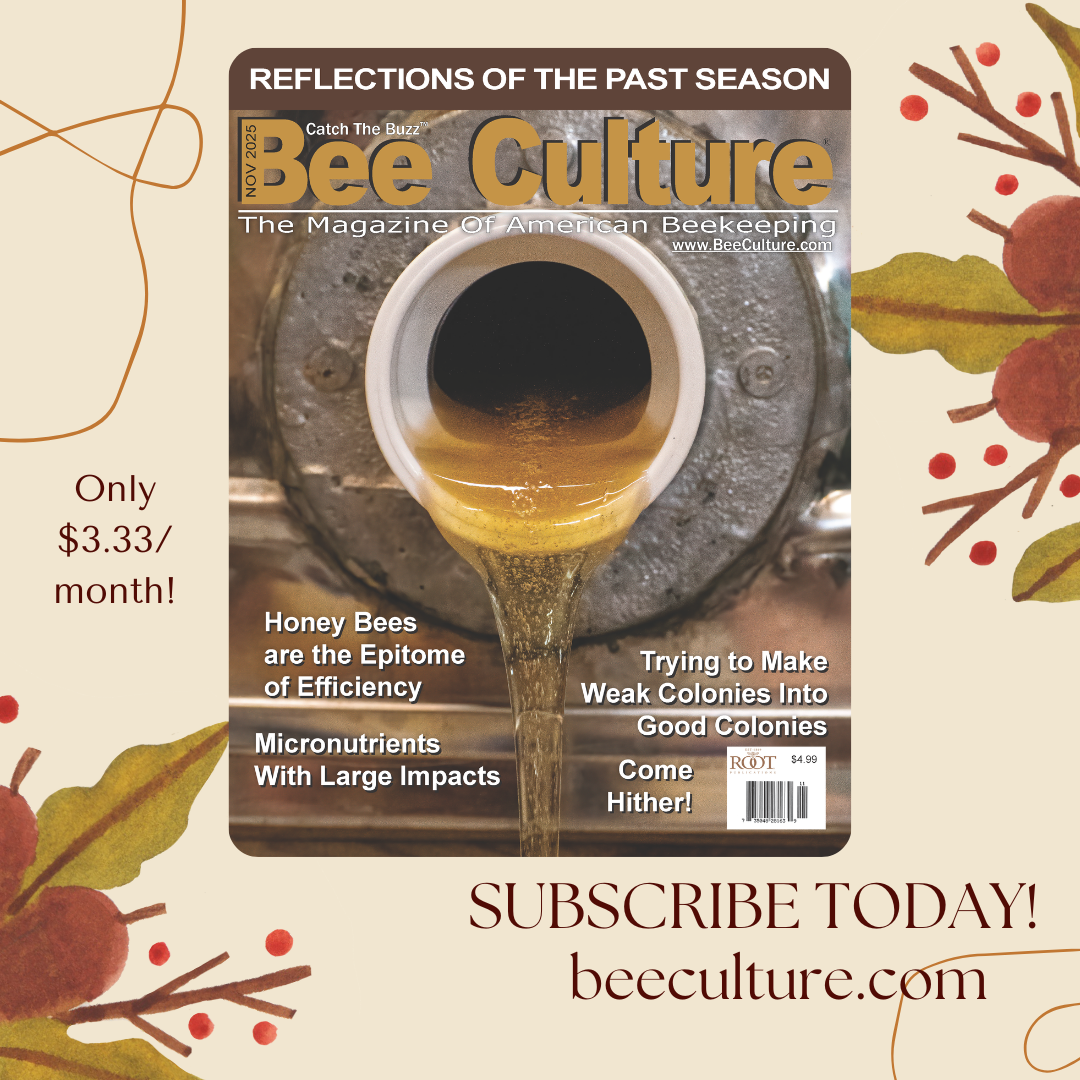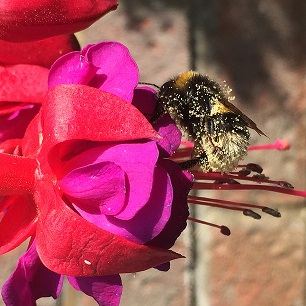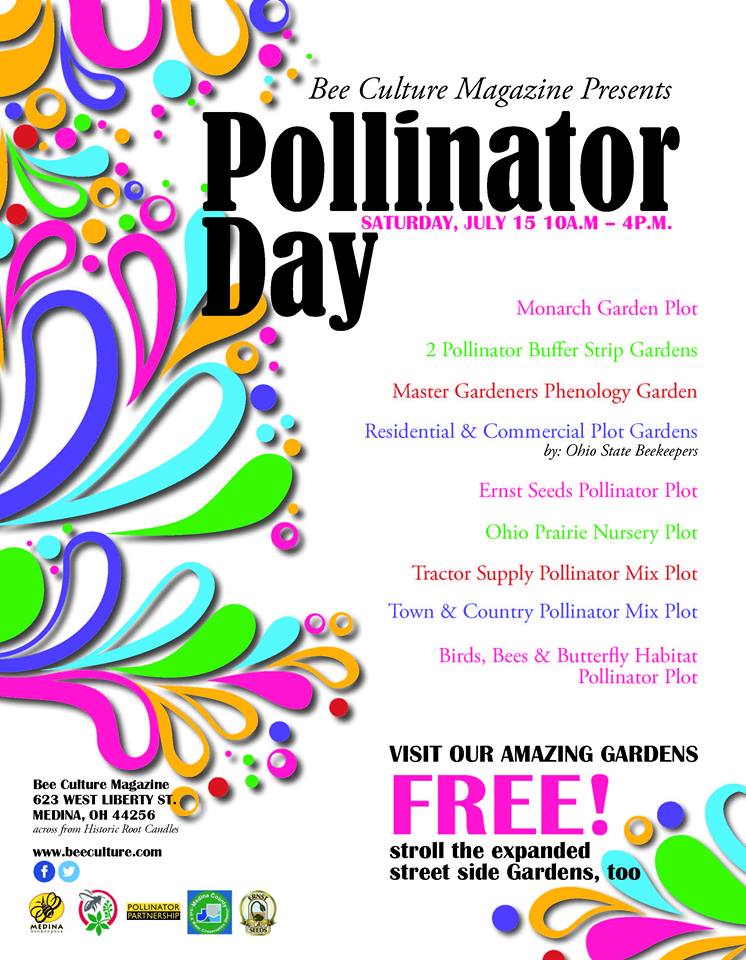On Saturday, July 15th we’re holding our third Pollinator Day here at the Root Company’s Pollinator Meadow, behind our Corporate Headquarters. There’s a several acre field back there that, for over a hundred years has sat idle, a playground for deer, rabbit, groundhogs and the occasional meadowlark. Then, a few of years ago we started simple, with just a frost planting of a pollinator mix from Pennsylvania’s Ernst Seeds. That did so good that the next year the local Medina County Master Gardeners wanted to join in with a phenology garden, part of a statewide program they have where they put the same flowering ornamental, landscape and pollinator plants several places in the state – running south to north – and record flowering dates at each location. They do a bang up job of taking care of the plot they have, mulching, fencing for those deer, groundhogs and rabbits, with even a bench to sit on and contemplate…phenology, I guess. It’s been working out quite well for them and they are good neighbors to have. And this year they have expanded it a bit, so there’s more to see.
Also that year we cleared the way for another garden, this one sponsored by The Pollinator Partnership and their Monarch butterfly monitoring program. They got that planted and going great guns by bringing in a boatload of transplants. During last summer and this summer they come in on a schedule and count visiting adult Monarchs, other butterflies, and any larvae. They have these volunteer gardens all over the state and it’s a good project to be a part of.
The list of plants they use is striking. Zizia aurea (Golden Alexander), Liatris aspera (Blazing Star), Lyrthrum alatum (Winged Lythrum), Eupatorium purpureum (Sweet Joe-Pye-Weed), and Veronicastrum virginicum (Culver’s Root) is there. There are a few more species, but since they haven’t bloomed yet, I’m not sure what all will be coming back. Not all of these plants have come back at each site from last year, I’m told by Amber Barnes, the student who is running this for the group. Other species on the planting list that may come back are: Asclepias exaltata, Ascelpias incarnata, Asclepias tuberosa (three milkweed species), Echinacea purpurea (Purple Coneflower, a very popular pollinator plant). Then there’s Pycnanthemum virginianum (Mountain Mint), Solidago nemoralis, Solidago rigida, Solidago speciosa (three Goldenrod species), Symphotrichum laeve, and Symphotrichum novae-angliae (both Asters). And right now the wild bergamot, Monarda fistulosa, (wild bergamot) is in full purple display, as is Parthenium integrifolium, (Wild Quinine) a huge white-flowered umbel.
Then, this year they added two more plots to their plantings. They have a program where a couple of seed mixes are used to plant buffer strips alongside agriculture fields giving the beneficials a safe place to go before and after the crop blooms so there’s something there for them to eat and reproduce on so the population grows for next season. There’s an all wild flower mix and a legume/wildflower mix and we have one of each that’s just now (July 1) in full bloom. It’s a pretty impressive planting.
Last year they added two new plantings. They have a program where farmers and orchardists can plant flowers attractive to beneficial insects so they have a place to go when the main crop is done blooming. One plot is a wildflower mix, and the other is primarily legumes and they are observing the visitation these get over the course of a few years.
The Ohio State Beekeepers, working with the Pollinator Stewardship group have a plot up there too that we started last year. They have a seed mix from Ohio’s Ohio Prairie Nursery that is being used to establish larger plots on volunteered corporate and homeowner land. The land owners donate use of the land, now almost exclusively in turf, get the land prepared, and then, using seed from the Nursery paid for with grant money, lay out fairly large pollinator-friendly plots in urban and suburban settings that will last several years. It’s a good program and, yes, we’re glad we can help show it off.
We added another two plots this winter to observe. They are off the shelf pollinator mixes from Tractor Supply, and one from Town and Country Co-op. Both are mixes picked for this area. We’ll watch them for a couple of years to see how they do. We found two more this spring and are trying to get them established by the wet weather has slowed this down.
This all goes back to six years ago when we placed some hives on the front lawn of what is now called the Homestead, the home A. I. Root built for his family next door to his new factory way back when. The hives were set almost next to the house, back from the street a bit, with the thought to encompass the whole rest of the front yard with bee plants. Although we ended up not using the whole yard, we put in a lot of those plants around and near the hives. At the same time we tore up the tree lawn in front of our main office building across the street from the Homestead and factory and put in a variety of bee friendly plants there, too. We’re located on a major traffic street in Medina and our flowers have gathered some attention in town. But it’s taken us a bit to find those plants that can tolerate some shade (there are, of all things, some Bradford pear trees planted on the tree lawn – more on them in a bit), and the salt spray from winter traffic. Each year we get a bit better at choosing replacements for those lost in winter, and those that are thriving in that environment are multiplying – much like a Mother Nature Selected Queen, you could say.
The other thing we have to do is sit back and watch…the deer, the ground hogs, the gophers, the rabbits…who all want lunch in the middle of all this (not so much the street plantings, but those in the Meadow take a munching daily, or nightly, actually). We have to be able to say that, yes, these creatures will visit, but their visits won’t do the gardens in, but simply offer a bit of pruning when they get too tall. What worth would a roadside or agricultural field buffer planting have if you had to fence it, too? Fences certainly don’t keep out bees or butterflies, but the cost would be…well, any cost would be too much, let alone maintenance or replacement. So, these plants have to stand not only the test of local, the test of are they attractive to pollinators, but the test of all of nature’s hungry inhabitants. The Phenology garden is the exception to being eaten however. The OSU Extension Master Gardener Volunteers have to keep everything there in tip-top shape so they can compare apples to apples as it were, so a pretty solid fence keeps their garden safe from most of these floral predators.
We keep expanding each year, spreading from the tree lawn on the street to the green islands in the parking lots alongside our building, and some of the areas bordering the parking lots so the ‘floral look’ starts at the street and your gaze follows the flowers across the asphalt and up to the field behind our building, finally reaching those plots in the Pollinator Meadow.
Our input is minimal really. We prepare the plot area the previous fall, then plant after frost and it goes from there. We don’t have to weed, feed or manage…just water when it gets really dry (I spent a lot of years figuring out irrigation logistics on land a lot larger than this so it’s kind of fun doing that again). After all, these are all native plants, all wild and all Mother Nature Selected. Jeff, the guy who mows all this doesn’t mind at all because every time we put in a new garden there’s that much less he has to mow. But, there’s lots more corners and short pieces to mow so there’s more turning and jockeying around. But Jeff’s a pretty easy going fellow and it seems to work for him. Of course, there’s also that much more to feed the deer, groundhogs, rabbits and such too, so I’m not sure who comes out ahead.
I mentioned those Bradford Pear trees planted in the tree lawn, put in by the city of Medina Forestry Department a bunch of years ago. They are a popular street tree, but they’re not native, and, when first introduced, were supposed to be sterile and non-reproductive. Well, that changed somehow, and now they are just another pretty face, taking up space, spreading like wildfire and basically making a mess everywhere they are planted. The bloom is striking, which is why they were picked for showing off, but the blossoms actually have a fairly foul odor, not unlike all pear blossoms, so you’ll never see a bee on one of these trees. Plus, they are incredibly susceptible to fire blight and after only a few years the tips begin dying back, then whole branches, then the tops and finally the whole tree. A Bradford pear tree doesn’t belong in a pollinator garden, so we’re trying to convince the city to have them removed.
So on July 15th we’ll have a day where all this is open to anybody that wants to come and visit. Everybody who’s part of this will be there to show off their gardens and programs. It runs from 11 to 4, the weather promises to be perfect and we’ll have representatives from all of the garden sponsors there to tell you more about their programs – folks from the OSU Extension Master Gardener Volunteers and The Ohio State University Pollinator Programs, the Monarch people, the Ohio State Beekeepers, Pollinator Partnership, a few food trucks and such will be there with honey ice cream, honey bakery items, hot dogs without honey, honey popcorn (maybe), a couple of local CSA type farm folks with new-season apples and peaches for sale, Medina County Beekeepers and Medina County Soil and Water, seed companies selling pollinator seeds for gardens you can look at in bloom, and probably more. You’re invited. It’s free. There’s lots of parking and lots of people who want to share what they know about all this. Take a day, make the trip. It’ll be worth your time. Heck, it’ll be fun! We hope to see you there.











